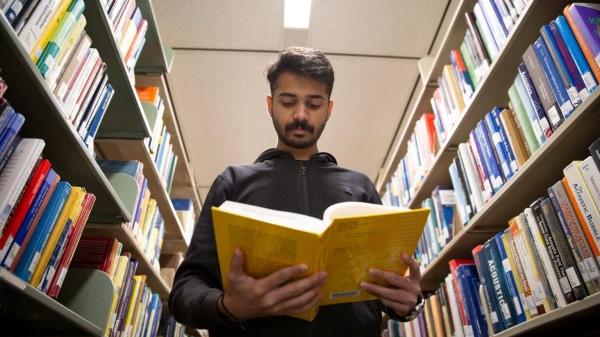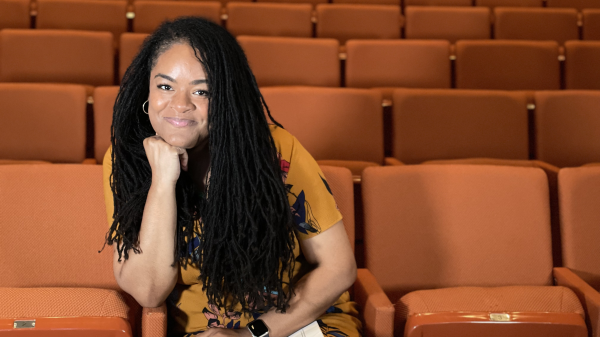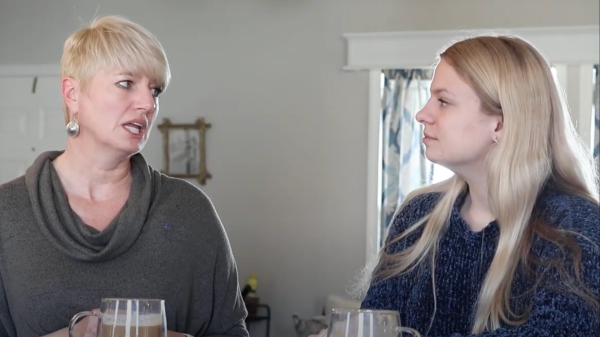ASU professors explore impact of STEM education in US prisons
Their work has been documented in a new book released this March

"STEM Education in U.S. Prisons" is a collective effort of ASU professors sharing their insights and experiences in building science curricula and navigating various challenges with prison education. Book cover courtesy of Joe Lockard
Arizona State University professors Joe Lockard and Tsafrir Mor have spent years educating inside prisons.
From poetry workshops to biology, providing high-quality education for incarcerated people has been a large part of their careers as educators.
Now, they have documented prison education programs across the country in “STEM Education in U.S. Prisons,” published March 2024.
Lockard, an associate professor in the Department of English, founded the ASU Prison Education Program in 2009, which provides education to those incarcerated in Arizona prisons.
What started as an idea from Lockard and Mor became reality because volunteers gave time to teach in prisons. The program now partners with the Arizona Department of Corrections and five prisons in Arizona.
“ASU’s Prison Biology Education Program is a cooperative endeavor between faculty and students from many schools and centers across the university,” Mor said. “The program would not be sustainable without the passion, sense of service and duty of the many postdocs, graduate and undergraduate students that contributed to it their talents, their expertise, and not less importantly their very valuable time.”
In addition to biology, the program has taught classes in philosophy, accounting, creative writing, Chinese and more.
Both Lockard and Mor, a professor in the School of Life Sciences, now serve on the program's advisory committee.
“Education is a universal human right, no matter what you have done,” Lockard said. “It’s the basic way we improve ourselves, and we do want that improvement.”
Lockard taught a weekly poetry class in Florence State Prison for 10 years. While there, another educator was leading a calculus class of 25 students. Lockard was fascinated by how people so undervalued were doing work in advanced calculus. He wondered how the same principles of teaching poetry could translate to STEM fields.
“STEM Education in U.S. Prisons” is a collective effort of Lockard, Mor and other educators who are teaching prison programs, including ASU Assistant Teaching Professor Steven Hart.
Contributors share their experiences building science curricula and navigating various challenges, such as adapting to high-security prison environments that include strict limitations on accessing and using lab equipment.
“Science education is rising to the challenge of providing solid intellectual content to prison education. For that reason, it is exceedingly valuable,” Lockard said.
Chapters also include personal stories from incarcerated or formerly incarcerated individuals who benefited from prison education.
Question: What was the idea behind the book?
Lockard: The rationale behind the book is that if we want credible college degrees in prisons, we will need to teach science. Nobody has been thinking about how we deliver science education in prisons. There’s virtually no literature and only a few science-oriented prison education programs. We wanted to gather knowledge that is out there to help create those programs.
Mor: We also wanted to hear the voices of those incarcerated on how studying science, both inside and upon release, affected their lives. We wanted to hear from science teachers on how they did it.
Q: What was the writing process like?
Mor: It was a challenge from the start figuring out how to recruit papers for this and find people who would write. There are no organizations or national conferences on this topic where you can find a group of papers in one spot.
Hart: The writing was challenging because it was outside my and the other students' comfort zones. We had all been adept at technical writing, but not this kind of writing. Even though many of us were brought to the program because we were passionate about pedagogy and teaching, we’re not pedagogy scholars. It took a lot of work, and we’re all very proud of our contributions.
Q: What part of the book are you most excited about people reading?
Lockard: The last chapter is a call to teach in prisons. After going through all this discussion, we needed to state the primary purpose. It was to recruit science teachers to go out and teach science in prisons. So, that call is for scientific, educational and social activism. After reading this book, go out there and do something.
Mor: Beyond our chapter, some sections were written by people from the inside that probably have the most emotional value. They are expressive in writing, and they show what the value is. Some are still incarcerated, some are in the process of getting released and some are outside of prison. They show firsthand experience of being inside and on the receiving end of science education.
Hart: There’s a part where we talk about our laboratory activities. I think that often when you think of biology education in prison, you think they will not do experiments. At first, we didn’t, but as the course evolved and the students were eager for more, we went through the extra effort and got several lab experiments approved, brought in and performed.
More Arts, humanities and education

Engineering knowledge: Recommended reading from Fulton Schools faculty, staff
In this 13th edition of the annual Essential Reading feature, 10 more faculty and staff members in the Ira A. Fulton Schools of Engineering at Arizona State University join in carrying on the…

ASU Gammage Scholar and MFA student forges path to her future
Editor’s note: This story is part of a series of profiles of notable spring 2024 graduates. Theater was an escape and an outlet for Crestcencia Ortiz-Barnett as a young girl in Detroit. “I learned…

Data science student investigates Arizona education system, reform through Steve Jobs Archive fellowship
Arizona State University student Brinlee Kidd was one of nine people across the U.S. chosen for the inaugural Steve Jobs Archive (SJA) Fellowship, launched last year with the goal of allowing young…